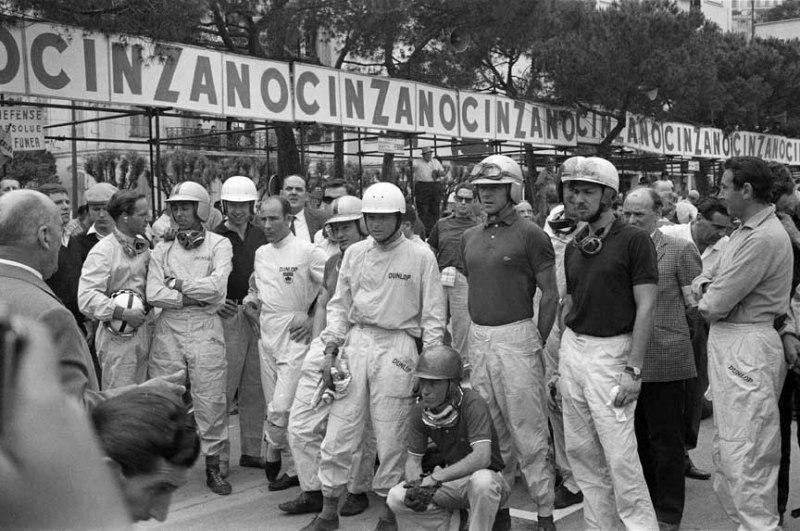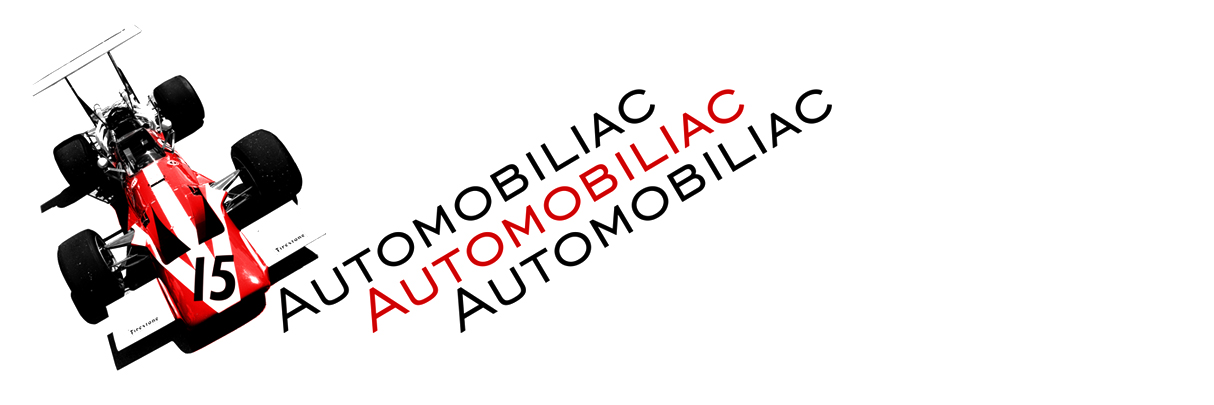Entries in Phil Hill (3)
Phil Hill's racing photographs due out in a new book!
 Thursday, November 1, 2012 at 6:01PM
Thursday, November 1, 2012 at 6:01PM I for one am quite excited to learn that Phil Hill's personal collection of racing photographs, taken on his trusty Leica, are currently being compiled into an upcoming book entitled "Inside Track" by his son Derek, photographer Steve Dawson, and renowned historian Doug Nye. Here's a brief video produced by Leica promoting the upcoming book. One of my favorite shots is at 4:05 showing a trophy surrounded by stacks of prize money.
More info about the book at Phil Hill's official web site. You can sign up on thier mailing list to be notified when the book is out!
via Motorsport Retro
 Derek Hill,
Derek Hill,  History,
History,  Leica,
Leica,  Phil Hill,
Phil Hill,  Photography,
Photography,  video in
video in  Book Review
Book Review Book Review: "The Limit" by Michael Cannell
 Sunday, October 30, 2011 at 1:52PM
Sunday, October 30, 2011 at 1:52PM  I just finished reading "The Limit" by Michael Cannell, which tells the tragic story of the 1961 F1 world championship season. The detailed narrative culminates in a fascinating title chase, which ultimately saw Phil Hill triumph as the first American F1 champion, while his closest rival and Ferrari team mate, Wolfgang von Trips met a gruesome and fateful end at the Italian Grand Prix. Along the way, we are treated to a vivid and occasionally shocking portrayal of the time, and of all the colorful characters who inhabited the world of motor racing in the late 1950s.
I just finished reading "The Limit" by Michael Cannell, which tells the tragic story of the 1961 F1 world championship season. The detailed narrative culminates in a fascinating title chase, which ultimately saw Phil Hill triumph as the first American F1 champion, while his closest rival and Ferrari team mate, Wolfgang von Trips met a gruesome and fateful end at the Italian Grand Prix. Along the way, we are treated to a vivid and occasionally shocking portrayal of the time, and of all the colorful characters who inhabited the world of motor racing in the late 1950s.
This wonderful and enthralling new work comes from an unlikely source: Michael Cannell is best known as a design/architecture journalist and author who professes little interest in or knowledge of cars and motor racing. Yet his journalistic research and storytelling powers are so strong that I never for a moment felt I was being narrated to by a neophyte. The highest compliment I can pay to the author is that his book is so thoroughly researched, it gives the impression the author is steeped in racing history, and understands the technical side of the sport rather well.
But it's really the human story that interests Cannell, and he delves deeply into the psyche of the neurotic, obsessive Phil Hill and the brash, yet boyishly charming Wolfgang von Trips. Making use of extensive interviews, diaries, letters and historical material, Cannell is able to weave together a remarkably human portrait of each driver, allowing us to really understand each man's philosophy about his sport, and how he coped with triumphs, setbacks, and the inevitable tragedies that were an all-too-common facet of racing in that most dangerous era. By 1957, Phil Hill (at center) and Wolfgang von Trips (to Hill’s left in a polo shirt) had joined the Grand Prix, an international fraternity with a grisly mortality rate. Credit: Klemantaski CollectionI personally picked up this book knowing relatively little about the personal biography of Hill or Trips, but by the end of the volume, I felt I had seen the fascinating intersection between two men's very different trajectories both as people and as athletes. This book is essentially the story of two men who came from wildly opposed circumstances, but came to share the same métier. The randomness with which one triumphed and the other perished illustrates so poignantly the callous omnipresence of death in that era of racing.
By 1957, Phil Hill (at center) and Wolfgang von Trips (to Hill’s left in a polo shirt) had joined the Grand Prix, an international fraternity with a grisly mortality rate. Credit: Klemantaski CollectionI personally picked up this book knowing relatively little about the personal biography of Hill or Trips, but by the end of the volume, I felt I had seen the fascinating intersection between two men's very different trajectories both as people and as athletes. This book is essentially the story of two men who came from wildly opposed circumstances, but came to share the same métier. The randomness with which one triumphed and the other perished illustrates so poignantly the callous omnipresence of death in that era of racing.
While much is discussed about the 1960s as a "killer era" in F1, Cannell describes the death toll of the late 1950s with great aplomb and gruesome detail. The deaths were as grisly as they were frequent. Whereas the 1960s was an era predominated by drivers belted in to die in horrific fires, the 1950s saw drivers ejected from their mounts, causing broken necks, decapitations, dismemberments, and sometimes massive civilian casualties due to poor circuit safety. The author, with whom I have become personally acquainted through his blog, likens the bloody F1 battle of the era as a proxy war that continued the nationalistic overtones and unfinished business of the second world war. And while I agree with him, I would add that the legacy of the war also seemed to steel the public against the shock of senseless death that became a regular occurrence. We learn, for example, that as a young lad, von Trips was a member of a team looking for survivors in the cadaver-strewn rubble after the Allied fire bombing of Cologne. Having seen humanity at its most shattered, surely this anaesthetized him to the scenes of carnage that were often on view --most notoriously at the 1955 running of Le Mans or the 1957 Mille Miglia. The ability to look past tragedy and focus on winning, even at the risk of one's life, is the central enigma of the racing driver that is well examined in "The Limit."
The book is already available on Amazon, and although it's a little early in the season, I definitely recommend it as a holiday gift for anyone interested in racing history. The book should be on shelves in bookstores across the nation in the coming weeks. Below is a video trailer for "The Limit" that you might enjoy watching:


